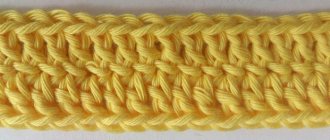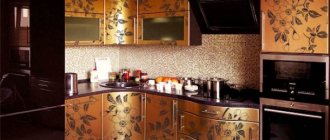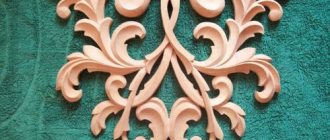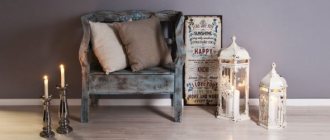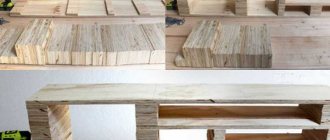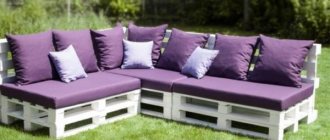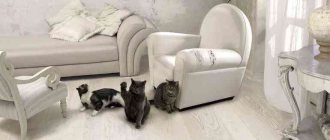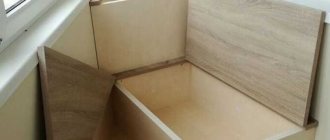Solid wood stool - product features
A stool is a seating item, the design of which excludes the presence of a back and armrests. Usually it has quite modest dimensions, but there are varieties of impressive dimensions. For example: the bar version has longer legs.
The scope of application of such products is quite extensive. They can be found in apartments and restaurants, laboratories and production workshops.
If we consider only home use, then in this case a stool made of solid wood will look equally appropriate in the hallway, kitchen, living room, bedroom, dining room, bathroom.
The peculiarity of such products is that they do not clutter up the space.
Pros of wooden stools.
- Strength.
- Reliability.
- Durability.
- Attractive view.
- Environmental Safety.
- A good combination with different materials and interior styles.
At the same time, it is worth noting the weaknesses.
- Need for special care.
- High price.
- Sensitivity to changes in humidity and temperature.
Types of stools by functional purpose
- kitchen stool
- a stool designed for performing work in the kitchen. - for tourists
- a folding stool with a light, durable base that is resistant to moisture and heat (aluminum tubes, etc.). - bar stool
- high stools with foot support. - for playing a musical instrument
- stools with a rotating, height-adjustable seat. - special purpose
- intended for a specific type of work, and having specific features (size, strength characteristics, coatings).
What types of wood are used in production
Different types of wood are used in the production of solid wood products. Each type has its own characteristics that must be taken into account when choosing. Several factors are assessed.
- Hardness.
- Moisture resistant.
- Sensitivity to mechanical and shock loads.
- Aesthetic characteristics: color, pattern, texture.
Based on the first sign, 3 groups are distinguished.
Soft varieties - pine, aspen, fir, spruce, linden, alder.
Elm, walnut, cherry, and ash have a medium degree.
Maximum hardness is found in oak, maple, beech, and boxwood.
It is easier to work with wood of the first group, but it quickly loses its original appearance.
Products made from materials of the third group will last for several decades, but the processing process is quite labor-intensive.
- Oak deservedly takes first place in many characteristics. Its wood pleases with a variety of shades: gray-brown, yellow, light red. Oak products are massive. Their surface is often decorated with ornate carvings.
- Walnut is also quite hard, but more malleable in processing. Its peculiarity is the absence of chips, so craftsmen are able to create filigree patterns. Wood coloring provides a wide range of possibilities. Ranging from light to black, including all shades of brown. Sometimes you can find red and purple colors.
- Pine is most in demand in furniture production. It is easy to process and tint. Thanks to the presence of special substances, wood is resistant to rotting, changes in temperature and humidity. A bonus when purchasing pine stools will be a light pine aroma.
- Larch is characterized by high decorative characteristics. Its wood is available in 12 shades.
- Beech, despite its hardness, becomes elastic after steam treatment and is suitable for the manufacture of bent elements. Initially, the wood is white with a yellowish tint, but over time its tone becomes pinkish-brown. The material is sensitive to moisture and can deform.
- The original color of linden is white, but with the help of stain it can be given a shade of any species. The material is stable in conditions of high humidity, but can be damaged by pests, so it needs special impregnation.
- The wood of fruit trees (cherry, apple, pear) is well processed, but is not particularly durable.
- Ash is inferior in hardness to oak, but its feature is clear growth rings. Furniture made from it looks expensive and stylish, and warm natural shades will make the atmosphere truly cozy.
Round or flat tenons are used to connect wooden elements. Final fixation occurs with glue. This assembly method is considered the most reliable.
The top cover can be secured with self-tapping screws, screwing them in from the front side. The caps are deepened, and the resulting irregularities are filled with a mixture of glue and sawdust. After the composition has hardened, the surface is sanded.
Decor options for wooden stools
The following techniques have been developed for decorating wooden products.
- Thread. Openwork patterns are created using special tools. The final result, depending on the method of execution, can be flat or voluminous.
- Mosaic. An image is made from small fragments that are glued to the surface.
- Burning out. Using a heated pin, an ornament, inscription or drawing is made.
- Embossing. On soft types of wood, the pattern is extruded. Molds are used for decoration. The process occurs at elevated temperature and pressure. It is possible to pre-soften harder rocks by treating them with steam or a solution of hydrochloric acid.
- Turning. This method allows you to obtain a perfectly smooth surface with different profiles.
The following steps will help emphasize the natural nature of the material.
- Firing with a gas burner allows you to achieve an unusual look.
- Bleaching is used to change color, eliminate color unevenness, and smooth out patterns.
- Waxing emphasizes the structure of the material. The wood is first impregnated with heated oil (82-91°C), and then molten wax is applied.
- Staining allows you to give the wood any shade.
- The last stage is the application of clear or tinted varnish.
- In some cases, it is appropriate to use acrylic-based paints.
Before the final step, it is necessary to impregnate with an antiseptic composition, which will prevent rotting and destruction by pests.
Types of structures
Wooden stools are either stationary or folding.
The simplest product consists of 4 legs and a top cover. For reliability, the design is supplemented with drawers and legs. If the item complements the bar counter, then its height is greater, and there is always a footrest in the lower part.
Folding products are a godsend for small apartments, and will also allow you to install additional seats in a matter of minutes. After the feast, they are removed to a designated place.
There are models that can turn into a small ladder. Such a device will be useful, as it will allow you to easily reach the top shelves.
Some products include a drawer for storing useful items, which is located under the seat.
seat
Increasing the comfort level of a stool is quite simple. To do this, you need to equip it with a soft seat. It consists of a base, a layer of filler 3-6 cm thick and upholstery.
The choice of upholstery material largely determines external indicators.
Genuine leather looks expensive and stylish, and is characterized by high strength and durability. But a set of items with a leather top can make a significant hole in the family budget.
Substitutes can successfully compete with it. The price is especially attractive. The material can imitate the first option in color and texture, but will not last as long.
Fabric upholstery provides ample opportunities for realizing design ideas. If you plan to use stools in the kitchen, then you should choose a material with special impregnation.
Rigid models captivate with their completeness, although sitting on them is not very comfortable. It is worth abandoning flat surfaces and preferring a slightly concave configuration. One option: a creative model, the seat of which can sag under the weight of a person.
The shape of the seat can be round, square, rectangular, oval. You can find products in which the upper part is made of a transverse cut of wood.
Chairs
Almost all people consider this furniture attribute to be the most convenient. This issue needs to be looked into more specifically. For complete comfort, the seat should be large and soft. The back is wide and strong so that you can easily lean on your elbows and relax. Wooden or iron material will be very hard for thin people. The product should not have crossbars that are too thin or sparse. The armrests are spaced far enough apart so that they don’t dig into the sides. The upholstery fabric is pleasant to the touch and of good quality.
Pay attention to the legs of the chair, conduct a personal diagnosis when purchasing, sit on it and lean your entire weight on the back. It should not wobble, otherwise there is a risk of falling back.
Thus, we conclude that the back of the chair will take up a lot of space, and you will have to sit on it like on stools if the product is not of sufficient quality. Most often, such pieces of furniture are placed in large dining rooms or kitchens.
Base
The base of the stool often has 4 legs. In cross section they can be round or rectangular, located vertically or at an angle. This option is considered the most sustainable.
The 3-legged seat looks elegant, but requires careful use.
Massive supports installed on both sides are cut from a single piece of wood, and a plank is installed between them, giving rigidity to the structure.
The designer model, reminiscent of a transparent cube, will fit perfectly into a modern interior.
One support boasts a wooden stool shaped like an hourglass.
In folding models, the legs are crossed in pairs in the shape of the letter X.
Stools
The main property of a stool is practicality. They take up much less space and easily slide under the table and stack one on top of the other. Easier to transport to any corner of the room. In small kitchens, tables are usually placed against the wall, so you can lean on it and no backrest is needed. A good alternative to any support. In stores you can find any shape and design of this furniture to suit your taste. According to the criteria, stools are not inferior to chairs. However, in huge dining rooms, they will look poor and unsightly.
Based on the above, it becomes clear that stools have more advantages. They have a variety of designs to suit any kitchen, the same soft seats and good durability. Suitable for small spaces.
Features of operation
Simple recommendations will help extend the service life and preserve the attractive appearance of wooden products for a long time.
- Remove dust with a soft cloth.
- Special care compounds are used. With their help, it is easier to remove dirt and restore shine and color.
- Periodically treat with antiseptic agents.
- Renew the varnish coating.
- Protect from moisture and overheating.
- Careful handling will help avoid dents, chips and other damage.
- Metal fasteners are checked and tightened annually. The moving parts of the folding mechanism are regularly lubricated.
- Upholstered seats should be cleaned with a vacuum cleaner or steam cleaner at least once a month.
Wood requires a certain indoor microclimate. The optimal temperature range is 15-25°C, and humidity is from 45 to 70%.
Wooden stools are reliable and durable pieces of furniture. For your home, it’s easy to choose suitable models based on design, cost, and construction that will fit into any interior style.
Manufacturing workshops
After the drawing with dimensions is completely ready, it is necessary to cut out the material and cut out the patterns. Beginners will be able to make their own wooden kitchen stool, a plywood version, and a rotating model. A detailed description of the work process will help you make a solid design and avoid common mistakes.
Kitchen wooden
A wooden stool with a square seat is a classic model that has retained its relevance today. For work you will need boards 30–40 cm long and 2.5 cm thick, bars 3 x 3 cm. The tools you need to prepare are a screwdriver, a saw, a plane, emery, paint and varnish compounds, and brushes. The work is carried out in stages:
- The bars are sawn into 4 pieces of equal length, the parts are processed with a plane, and polished. These will eventually become the legs of the stool.
- The seat is assembled using boards measuring 40 x 20 cm. The area of the seat should exceed the parameters of the base by at least 10 cm. The surface is carefully sanded.
- The drawers are prepared in the same way as other elements; they are connected to the supports using a screwdriver; you can also use furniture hinges.
- Fix the footrests, the length of which coincides with the parameters of the drawers.
- Secure the frame and seat of the stool using a screwdriver.
- The finished structure is checked for smoothness and, if necessary, sanded again.
How to choose an orthopedic pillow for a chair according to shape and material
Making a wooden stool with your own hands is completed by painting. Aerosol formulations are suitable; using a stencil, you can apply any design to the surface. After drying, the product is coated with 1–2 layers of varnish.
From plywood
To build a stool from plywood, you need to prepare 3 parts with grooves. You will need an element for a seat with a diameter of 35 cm and a pair of legs 42 cm high, 20 cm wide at the top, 35 cm wide at the bottom. Tools and consumables will include a screwdriver, a grinder, wood glue, and self-tapping screws. The work is carried out according to the instructions:
- The plywood sheet is cut, all elements are cut out, and processed using a sanding machine.
- The base is secured using special grooves and additionally treated with glue.
- The seat and legs are connected with self-tapping screws.
After completing the main work, all edges are cleaned with a grinder or sandpaper. The finished plywood stool is coated with colorless varnish with your own hands. When the product is dry, you can use it for its intended purpose.
Prepare 3 pieces with grooves for the legs and 1 piece for the seat
Connect the supports by inserting the grooves into each other
Check the reliability of the fastenings, if necessary, apply wood glue to the joints
Connect the seat with the legs with self-tapping screws, using an embedded part for this.
The finished plywood stool can be coated with colorless varnish
Rotating
Chairs that can swivel are often used when working at a computer or while playing the piano. It is difficult for a polisher to make a screw stool, since the mechanisms have a rather complex structure. The work uses suitable schemes; you will need pieces of wire rod, a metal pipe, a pin, steel daisy washers, bolts, a piece of plywood, and rubber plugs. In addition, a rotating stool cannot be made without a drilling machine and welding machine.
Rules for choosing a kneeling chair, step-by-step DIY production
The process of creating a design includes several stages:
- The supports are bent from pieces of wire rod.
- 4 holes with a diameter of 8.2 mm are drilled in a metal pipe. It is necessary to retreat no more than 80 mm from the edge.
- The supports are welded to the pipe. Washers are fixed at the ends of the latter, then rubber plugs are inserted.
- An M12 thread is cut on a steel rod and the product is given the shape indicated in the stool drawings.
- 4 holes are made in the metal plate and shaped like the letter “P”.
- A hole is drilled in the middle of the pin to install a metal ball.
- A U-shaped plate is fixed to the opposite end of the pin.
- All elements of the mechanism are connected together and the seat of the stool is secured. The work is done using countersunk bolts.
If desired, the seat can be made soft during assembly of the structure. To do this, glue a suitable piece of foam rubber onto the plywood base of the stool. The upholstery fabric is stretched over the top and secured with a furniture stapler.

